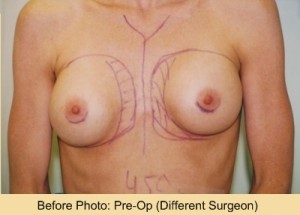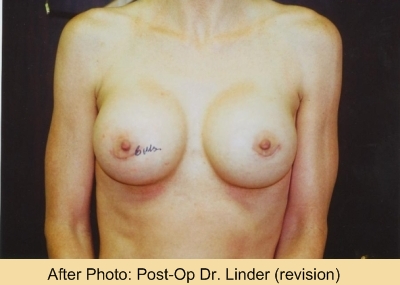How Much Cleavage Will I Have?
Posted On: April 12, 2009 Author: The Office of Dr. Stuart Linder Posted In: Breast Augmentation, Breast Implants, Breast Revision, Breast topics
The patients present in consultation with many questions, which include “How much cleavage will I have?” Well, a woman’s cleavage post-surgical depends on several variables:
- Anatomy: If the muscles are laterally displaced and attached to the ribs or costochondral ribcage laterally, then in order to maintain some muscle coverage, it may be impossible to yield excellent cleavage. There has to be a balance between the amount of muscle released along the sternum and the amount of coverage which must be maintained in order to prevent visibility and rippling of the bag. In my opinion, it is always better to maintain coverage than to create perfect cleavage because seeing visibility of the breast implant along the inner chest cannot only look deforming, but can be psychologically tormenting to a patient and very difficult to hide in normal clothing.
- Diameter and Size of the Implant: Obviously, the wider the diameter of the implant, the greater the ability in order to maintain cleavage in order to fill up the medial poles of the breast. Therefore, when I use high profile, narrower tapered implants, I usually go with a larger size in order to maintain some of the diameter, but yet gain more AP projection. This is especially true with breast revision surgery, when you’re replacing a moderate profile implant with a high profile implant.
- Technical Ability of the Doctor: Remember, Board Certified Plastic Surgeons have the experience and judgment to determine where and how much of the subpectoral muscle along the sternum should be released, which can increase greatly your cleavage postoperatively.
The above example is a breast revision surgery that Dr. Linder performed on a patient who had had surgery nine years previously with laterally displaced implants due to encapsulation, Baker IV capsular contracture, as well as laterally placed implants directly from her original surgery and malpositioning of the implants. Postoperatively, you will see that the muscle has been released and larger implants have been placed in order to fill the medial void.

